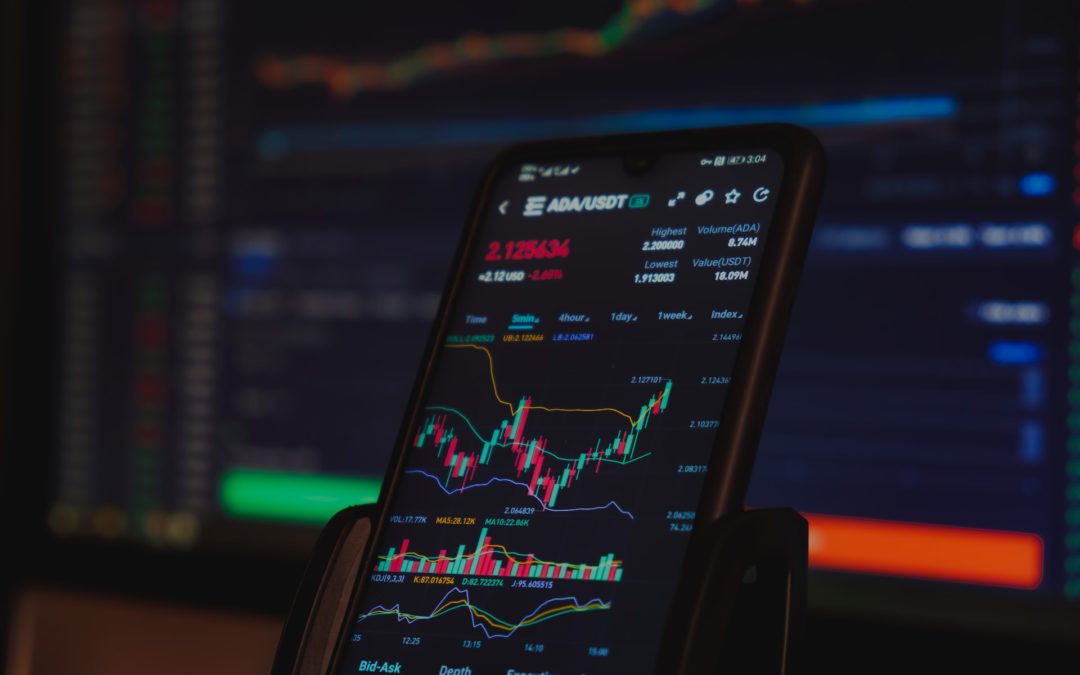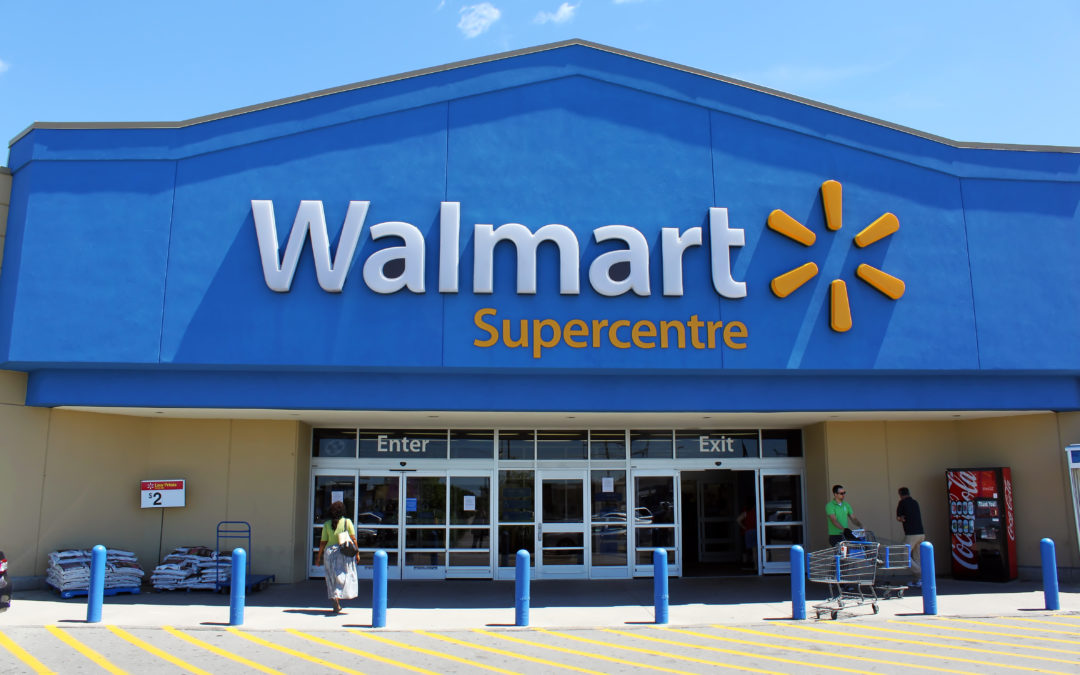
by Jonathan P-Wright | Sep 27, 2022 | Business News, Latest |
During the past 24 years, a Voyager customer has lost $1 million in savings and is now one of many struggling to recoup the money.
Desperate times call for desperate measures, and that’s precisely what one Voyager customer is doing. After losing $1 million that he had saved over 24 years, he is now resorting to extreme methods in an attempt to get his money back.
She’s not alone either; many other customers have lost money due to the recent issues with the popular crypto trading platform. In this article, we’ll explore how the loss of funds has affected these people and what they’re doing to try and get their money back.
Who is Voyager, and what do they do?
Voyager is a digital currency trading platform that allows users to buy and sell cryptocurrencies. Voyager also offers a mobile app that lets users trade on the go.
Voyager was founded in 2018 by Oscar Salazar, a former hedge fund manager, and Philip Eisner, a software engineer. The company is based in New York City.
Voyager offers commission-free trading for U.S. customers and low fees for international customers. The company also has a referral program that gives users $25 in free Bitcoin for every friend they refer to the platform.
Voyager has been growing in popularity in recent years as more people invest in cryptocurrencies. However, the company has come under fire recently after some customers lost millions of dollars saved over years of trading on the platform.
What happened to the customer’s money?
The customer’s money was invested in several different Voyager products. These products were designed to give the customer a good return on their investment over time. However, the products failed to perform as expected, and the customer lost significant money.
The customer is now one of many who are desperate to recoup their losses. They have been contacting Voyager customer service for months but have so far been unable to get their money back.
It is unclear what will happen to the customer’s money. Voyager has not said anything publicly about the situation. However, it is clear that the customer is facing a challenging situation.
How are other customers affected?
Other customers are affected in a variety of ways. Many have lost a significant amount of money that they had saved over the years. Some are now desperate to recoup their losses. Others are angry and frustrated with the company. Some customers have even filed lawsuits against Voyager.
Many people now desperate to recoup funds.
The Voyager customer who lost $1,000,000 million saved over the years is just one of many now desperate to recoup their funds.
Since the company’s collapse, many people have been left in a difficult financial situation. Some have lost their entire life savings, while others have been left with debt they can’t repay.
Many people are now desperately trying to recoup their losses. They are contacting their banks and credit card companies, as well as the courts, in an attempt to get their money back.
However, it is not clear how much success people will have in recouping their losses. The process is likely to be long and complex, and there is no guarantee that people will get all of their money back.
What happened to the money?
The customer’s money was invested in a number of different ventures, all of which failed. As a result, the customer lost the entire amount that was saved over the years.
This is just one example of many similar cases. Many people are now desperate to recoup their losses from Voyager.
Many people investing with Voyager have their money stuck in limbo. This is why many investors are hesitant to invest their money.

by Diontae Bussey | Nov 17, 2021 | Business News, Latest, Tech News |
Apple TV is Keeping Customers Tuned in with Exclusive Content
Apple TV is not slowing down its content production on the streaming device by teaming up with new partners, building their own Apple TV Shows, and creating exclusive TV content.
What is the Apple TV?
Apple TV is a media streaming device produced by Apple Inc. It can connect to televisions through cable, satellite, or Wi-Fi networks. The 4K Apple TV has limited storage capacity, but you can plug external hard drives into a USB port on the system for additional storage space if needed.
The interface of the iTunes store is sleek and straightforward, with large tiles that make it easy to see movies and television shows while scrolling through them with a remote.
The original content made by Apple is unbelievable
Traditionally, Apple TV has been best known for its content delivery of third-party programs. However, the company has been moving into original content more aggressively since unveiling their newest original series based on Carpool Karaoke in August 2016. Created by James Corden (of Late Late Show with James Corden fame) and Ben Winston (Producer of Adele’s “Hello” music video), the show features celebrities doing their favorite tunes together over a car ride.
Available only on iOS devices, the iOS App Store has iOS apps that users can download onto their iOS device. Apple TV offers a wide range of rotating content they generate in-house or created exclusively for Apple. They also provide a variety of their own original programming that they have been rolling out over the past year, including “Planet of the Apps,” “Carpool Karaoke,” and “Clips.”
Subscription services on Apple TV
The Apple TV 4K has been a raving success since its launch, and a significant reason for this was its built-in subscription services allowing customers to stream a variety of content straight from their device. What’s more, with each new release of the Apple TV, its streaming quality continues to become sharper and clearer. With so many subscription-based video streaming services now available, devices like the Apple TV must keep up with constant improvements as this will keep customers tuned in to their content. Live TV is available on Apple TV. What’s more, there are also additional subscription-based video services, such as Hulu and Netflix.
Conclusion
Apple TV has exclusive and original content and, avoiding many of the limitations of television, is proving to be a viable solution. Apple TV continues to deliver on its promise of being everything you love in one device. Customers will want to tune in to Apple TV if they value exclusive content from their favorite programs. In addition, an unmatched experience with Siri means it’s easier than ever for customers to find and enjoy their entertainment. Apple is doing a lot to stay at the forefront of TV innovation. I firmly believe that Apple TV will carry this momentum through the remainder of 2021, which only means better things for app developers and show creators in the long run.
This article was penned by Jonathan P. Wright. Jonathan is a freelance writer for multiple mainstream publications and CVO of RADIOPUSHERS. You can read more of his work by clicking here.

by Jonathan P-Wright | Jun 26, 2024 | Black Owned Business, Business News, Latest |
Photo by Ja San Miguel on Unsplash
Pinky Cole, the founder of the wildly popular plant-based eatery Slutty Vegan, has etched an indelible mark in the culinary landscape with her unwavering commitment to elevating Black-owned businesses. Her latest collaboration with PEPSI Dig In exemplifies her dedication to uplifting fellow entrepreneurs while scaling her own venture’s meteoric success.
Cole’s entrepreneurial odyssey commenced in July 2018, fueled by an insatiable craving for indulgent, plant-based fare. Undeterred by conventions, she christened her brainchild “Slutty Vegan,” a provocative moniker that instantly piqued curiosity and captured the essence of her daring, unapologetic approach.
The Humble Beginnings
In the nascent stages, Cole’s culinary creations were peddled through delivery apps, a testament to her resourcefulness and determination. By September of the same year, her indomitable spirit manifested in the form of a food truck, solidifying her presence in the competitive gastronomic arena.
Merely months later, in January 2019, Slutty Vegan’s inaugural brick-and-mortar establishment opened its doors, marking a pivotal juncture in Cole’s entrepreneurial expedition. From that moment on, her trajectory has been nothing short of stratospheric, propelling the brand into an international, investor-backed phenomenon.
The Pepsi Partnership: Amplifying Black-Owned Culinary Excellence
In a strategic alliance that underscores her commitment to uplifting fellow Black entrepreneurs, Pinky Cole has joined forces with PEPSI® Dig In as an ambassador. This collaboration aims to cast a spotlight on the nation’s most exceptional Black-owned restaurants, recognizing and celebrating their culinary prowess.
PEPSI® Dig In, a platform meticulously designed to foster access, business growth, and heightened awareness for Black-owned eateries, is harnessing the power of fan engagement to curate rewarding programs for its participants.
The Driving Force: Fan Loyalty
Cole’s candid acknowledgment of her fans’ unwavering support serves as a testament to the pivotal role they have played in Slutty Vegan’s ascent. In her own words, “Slutty Vegan wouldn’t be where it is today without its community of fans. From the start, they’ve been dedicated and loyal in supporting Slutty Vegan’s journey from a food truck to a multi-city restaurant chain and $100 million brand.”
This profound appreciation for her loyal following underpins her enthusiasm for the Pepsi Dig In partnership, which she views as a catalyst for inspiring a broader culinary community to vocalize their affinity for their beloved eateries and elevate them to the coveted status of “Restaurant Royalty.”
The Pepsi Dig In Mission: Driving Sustainable Growth
Scott Finlow, Chief Marketing Officer of PepsiCo Global Foodservice, articulated the ethos behind the Pepsi Dig In initiative, stating, “Pepsi Dig In has been a proud supporter of Slutty Vegan since the beginning, and part of the restaurant’s success is a testament to the platform’s mission to help grow the businesses it backs.”
Finlow underscored the pivotal role of programs like “Restaurant Royalty” in this endeavor, emphasizing their capacity to rally existing fans, engage new ones, and leverage the Pepsi brand’s vast network and scale to catalyze long-term, sustainable impact.
The Clarion Call: Crowning Restaurant Royalty
In a clarion call to food enthusiasts nationwide, the campaign encourages fans to submit their favorite local restaurants on DigInShowLove.com until June 30. This initiative not only presents an opportunity to win an array of coveted prizes but also serves as a platform to amplify the voices of Black food entrepreneurs, propelling their ventures into the limelight.
Pinky Cole’s journey from a food truck to a multi-city restaurant chain and a $100 million brand is a testament to her indomitable spirit and unwavering determination. Her decision to embrace a plant-based lifestyle and cater to the burgeoning demand for vegan cuisine was a calculated risk that paid off handsomely.
Challenging Conventions: The Provocative Name
The name “Slutty Vegan” itself was a bold move, challenging societal norms and preconceptions about veganism. By infusing her brand with an unapologetic, provocative edge, Cole captured the attention of a diverse audience, transcending the boundaries of traditional vegan marketing.
What began as a humble endeavor selling vegan burgers through delivery apps quickly evolved into a brick-and-mortar establishment, and eventually, an international, investor-backed brand. Cole’s ability to identify and capitalize on emerging trends, coupled with her unwavering commitment to quality and innovation, propelled Slutty Vegan to unprecedented heights.
The Power of Community: Engaging and Empowering Fans
Pinky Cole’s acknowledgment of her fans’ pivotal role in Slutty Vegan’s success underscores the power of community engagement and empowerment. By fostering a loyal following and actively involving them in the brand’s journey, Cole has created a symbiotic relationship that fuels growth and fosters a sense of collective ownership.
The Pepsi Dig In partnership represents a strategic move to harness the power of fan loyalty on a broader scale. By encouraging food enthusiasts to vocalize their support for their favorite Black-owned restaurants, Cole aims to create a ripple effect that amplifies the voices of these culinary gems and propels them into the spotlight.
Cultivating a Supportive Ecosystem
Ultimately, Cole’s vision extends beyond her own brand’s success; it encompasses the creation of a supportive ecosystem that nurtures and uplifts Black-owned businesses in the culinary realm. By leveraging her platform and influence, she is paving the way for a more inclusive and equitable industry, where talent and innovation are celebrated regardless of race or background.
Pinky Cole’s success with Slutty Vegan has coincided with a broader cultural shift towards plant-based diets and sustainable living. As consumers become increasingly conscious of their environmental impact and health concerns, the demand for vegan and vegetarian options has skyrocketed.
Tapping into Evolving Consumer Preferences
By offering indulgent, craveable vegan fare, Slutty Vegan has positioned itself at the forefront of this culinary revolution. Cole’s ability to tap into evolving consumer preferences and deliver satisfying plant-based alternatives has resonated with a diverse audience, transcending traditional vegan stereotypes.
Slutty Vegan’s provocative name and unapologetic branding have played a pivotal role in challenging preconceptions about vegan cuisine. By infusing her offerings with bold flavors and indulgent textures, Cole has effectively redefined the vegan dining experience, making it accessible and appealing to a broader demographic.
The Entrepreneurial Ecosystem: Fostering Collaboration and Growth
Pinky Cole’s partnership with Pepsi Dig In is emblematic of a broader trend in the entrepreneurial landscape – the recognition that collaboration and mutual support are key drivers of sustainable growth. By leveraging the resources and reach of established brands like Pepsi, emerging entrepreneurs can gain access to invaluable resources, mentorship, and exposure.
Strategic partnerships like the one between Slutty Vegan and Pepsi Dig In serve as amplifiers, enabling underrepresented voices to resonate on a larger scale. By aligning with a global brand, Cole not only gains visibility for her own venture but also creates a platform for other Black-owned businesses to thrive.
Moreover, initiatives like “Restaurant Royalty” foster a sense of community and camaraderie among entrepreneurs, encouraging them to celebrate and support one another’s successes. This collective effort to uplift and empower Black-owned businesses has the potential to catalyze a ripple effect, inspiring future generations of entrepreneurs and cultivating a more inclusive and equitable business landscape.
The Vegan Revolution: Sustainability and Social Responsibility
Pinky Cole’s plant-based endeavor, Slutty Vegan, is not merely a culinary venture; it represents a broader movement towards sustainability and social responsibility. As concerns over environmental degradation and ethical sourcing practices continue to mount, businesses that prioritize eco-friendly and cruelty-free practices are poised to resonate with conscious consumers.
By embracing a vegan ethos, Slutty Vegan has positioned itself as a brand that aligns with the ethical values of its customers. This conscious decision not only appeals to environmentally conscious individuals but also resonates with those who prioritize animal welfare and ethical sourcing practices.
Furthermore, Slutty Vegan’s success serves as a powerful testament to the viability and appeal of sustainable business models. By demonstrating that delicious, indulgent fare can be achieved without relying on animal-derived products, Cole is effectively challenging the notion that sustainability and culinary excellence are mutually exclusive.
The Future of Culinary Innovation: Embracing Diversity and Inclusivity
As the culinary landscape continues to evolve, embracing diversity and inclusivity will be paramount to fostering innovation and catering to the diverse palates of modern consumers. Pinky Cole’s journey with Slutty Vegan exemplifies the power of challenging conventions and embracing unique perspectives.
By infusing her plant-based offerings with bold, inventive flavors and drawing inspiration from various cultural traditions, Cole has effectively demonstrated the richness and versatility of vegan cuisine. This approach not only resonates with a diverse customer base but also serves as a catalyst for culinary exploration and cross-cultural exchange.
Empowering Underrepresented Voices
Moreover, Cole’s commitment to amplifying Black-owned businesses through her partnership with Pepsi Dig In underscores the importance of empowering underrepresented voices in the culinary realm. By creating platforms that celebrate and support diverse culinary talents, the industry can tap into a wellspring of creativity and innovation, ultimately enriching the dining experience for all.
The Entrepreneurial Mindset: Resilience, Adaptability, and Continuous Growth
Pinky Cole’s meteoric rise from a food truck operator to the founder of a $100 million brand is a testament to the power of resilience, adaptability, and a growth mindset. Her journey serves as an inspiration for aspiring entrepreneurs, highlighting the importance of embracing challenges, pivoting when necessary, and continuously seeking opportunities for expansion and evolution.
From her provocative branding strategy to her bold decision to embrace a plant-based lifestyle, Cole has demonstrated an unwavering willingness to take calculated risks and challenge conventional wisdom. This mindset has not only set her apart in a crowded market but has also enabled her to capitalize on emerging trends and evolving consumer preferences.
Continuous Innovation and Adaptation
Moreover, Cole’s ability to adapt and innovate has been a driving force behind Slutty Vegan’s success. By continuously refining her offerings, exploring new flavors, and embracing emerging technologies, she has ensured that her brand remains relevant and appealing to a dynamic customer base.
Ultimately, Pinky Cole’s journey serves as a powerful reminder of the importance of cultivating a growth mindset in the entrepreneurial realm. By embracing a mindset of continuous learning, experimentation, and evolution, entrepreneurs can navigate the ever-changing business landscape with agility and resilience, positioning themselves for long-term success.

by Jonathan P-Wright | Apr 30, 2024 | Business News, Latest |
Image credit: Niloo / Shutterstock.com
Walmart has launched Bettergoods, a new venture designed to redefine the culinary landscape by making gourmet foods accessible and affordable to all, especially targeting the younger Generation Z consumers. This introduction signals Walmart’s commitment to innovation, aiming to cater to the tastes of those who seek quality, chef-inspired foods without the hefty price tag.
By presenting Bettergoods, Walmart is not only breaking barriers in the affordable gourmet sector but also marking its largest private brand food launch in two decades. The effort underscores a strategic move to appeal to customers who prioritize both taste and value, particularly aiming at those not bound by brand loyalty, and heralds a significant shift in the retail giant’s approach to meeting evolving consumer preferences.
Unveiling bettergoods: A New Culinary Frontier at Walmart
Walmart‘s introduction of Bettergoods marks a significant milestone in the grocery sector, emphasizing affordability and gourmet quality. This strategic launch, the largest in two decades for Walmart, aims to cater to the evolving culinary preferences of consumers, particularly Generation Z, who are increasingly seeking quality food options without the premium price tag.
Key Features of Bettergoods
- Extensive Product Range: The Bettergoods line boasts 300 new products spanning multiple categories including frozen goods, dairy, snacks, beverages, pasta, and more. This diverse array ensures that there is something for every taste and need.
- Affordable Gourmet Options: Highlighting items like premium bronze-cut pasta from Italy and plant-based mozzarella, Bettergoods is set to transform the perception of gourmet eating into a more accessible experience, with most items priced under $5.
- Innovative Categories: The products are categorized into three main pillars: Culinary Experiences, Plant-Based, and “Made Without,” catering to various dietary preferences and trends. Availability and Accessibility: Customers can already purchase select items from the Bettergoods range both in-store and online, with options for curbside pickup and same-day delivery, enhancing the shopping experience and convenience.
Market Impact and Consumer Trends
- Shift Towards Store Brands: The launch aligns with a growing trend where consumers are gravitating towards store brands to mitigate the effects of food inflation. Bettergoods is positioned well to capitalize on this shift, offering both innovation and value.
- Appeal to Younger Demographics: With a focus on trendy and chef-inspired products, Bettergoods is particularly appealing to younger shoppers who are looking for affordable yet high-quality food options.
By leveraging global supplier relationships and focusing on quality and trend-forward products, Walmart’s Bettergoods is set to redefine grocery shopping, making gourmet food accessible to all. This strategic move not only enhances Walmart’s product offerings but also strengthens its position in the competitive grocery market.
What bettergoods Offers
The Bettergoods range is designed to be budget-friendly, with most items priced under $5. This pricing strategy makes gourmet food accessible to a broader audience, including cost-conscious Generation Z shoppers. Prices vary from as low as under $2 to a maximum of $15, ensuring affordability across a diverse product range.
Diverse Product Categories
Culinary Experiences: This includes upscale and innovative items like premium bronze-cut pasta from Italy and unique seasonings such as Hot Honey. Plant-Based: Featuring plant-based milks, cheeses, and non-dairy frozen desserts, catering to the growing demand for vegan and vegetarian options. Made Without: Focuses on products free from added sugars, antibiotics, or artificial flavors, appealing to health-conscious consumers.
Innovative and Unique Offerings
Bettergoods is not just about affordability but also innovation. The line introduces products that are unique to Walmart, such as Creamy Corn Jalapeno Chowder and Oatmilk Non-Dairy Frozen Desserts. These products offer new flavors and culinary experiences that are trend-forward and likely to attract shoppers looking for something different.
Accessibility and Convenience
Bettergoods products are available in-store and online, with options for curbside pickup and same-day delivery. This accessibility ensures that customers can easily purchase these gourmet options without altering their shopping habits, enhancing the overall consumer experience with Walmart.
Impact on Consumers and the Market
The introduction of Bettergoods by Walmart is timely, as it coincides with a significant shift in consumer behavior, where more shoppers are opting for store brands to counteract the effects of food inflation. This trend is not only a result of economic pressure but also reflects a growing trust in the quality of private-label brands, historically seen during economic downturns.
Competitive Landscape
Bettergoods positions Walmart to directly compete with similar initiatives like Target’s Good & Gather, enhancing its market appeal. By offering gourmet yet affordable products, Walmart not only retains its existing customer base but also attracts new customers seeking value without compromising on quality.
Product Rollout and Availability
The gradual release of the Bettergoods lineup ensures sustained interest and allows Walmart to analyze consumer feedback for further refinements. Currently, customers have the convenience of shopping for these products both in-store and online, with flexible options like curbside pickup and same-day delivery, which are crucial for catering to today’s convenience-driven shopper.
Pricing Strategy and Market Appeal
With most items priced under $5, Bettergoods is designed to attract a demographic that values economical gourmet options. This pricing strategy is particularly appealing to younger consumers, including Generation Z, who are less brand-loyal and more price-conscious, yet have a palate for upscale culinary experiences.
Satisfaction Guarantee
Walmart’s satisfaction guarantee on Bettergoods products mitigates the risk for consumers trying new flavors and concepts, thereby encouraging trial among hesitant buyers. This policy not only boosts consumer confidence but also demonstrates Walmart’s commitment to quality and customer satisfaction.
Response to Economic Conditions
The launch of Bettergoods is strategically aligned with current economic conditions where inflation has led shoppers to seek more affordable alternatives for daily staples. By offering a range of products from low-cost basics to premium items, Walmart ensures that Bettergoods meets a wide array of consumer needs and budgets.
Conclusion
Walmart’s unveiling of Bettergoods represents a pivotal transformation in the grocery landscape, promising to make gourmet, quality food not just an exclusive privilege but a widespread choice. By successfully marrying affordability with culinary innovation, Bettergoods stands as a testament to Walmart’s strategic acumen, responding adeptly to the evolving demands of Generation Z and beyond. The initiative not only broadens Walmart’s appeal across demographic boundaries but also sets a new benchmark for the affordable gourmet sector, underpinning the retail giant’s foresight in anticipating and shaping consumer trends.
As Bettergoods rolls out across Walmart stores, its impact is expected to resonate well beyond mere sales figures, potentially reshaping how consumers perceive store brands and gourmet food. By prioritizing accessibility, affordability, and quality, Walmart not just challenges existing culinary norms but also invites consumers to reimagine their daily eating experiences. This venture, thus, not only strengthens Walmart’s position in the competitive grocery market but also addresses the broader shifts towards economical gourmet choices, marking a significant step forward in the democratization of quality food.

by Jonathan P-Wright | Jan 18, 2024 | Business News, Latest |
Guardz, an Israeli cybersecurity startup, providing all-in-one security and cyber insurance solutions for small and medium businesses (SMBs), has successfully raised $18M in a Series A round of funding.
The Increasing Cybersecurity Threats for SMBs
With the advent of AI technologies, the cybersecurity landscape is shifting. SMBs, which were once considered safe from cyberattacks due to their size and fragmented nature, are now becoming a prime target for cybercriminals.
According to some estimates, SMBs now account for roughly half of all cyber breaches worldwide.
The reason behind this shift is the development of AI-powered cyber attack tools that allow malicious actors to launch large-scale attacks with ease. These AI technologies have made it possible to exploit vulnerabilities within SMBs, causing a spike in cyber threats.
Guardz’s Journey: From Stealth Mode to $18M
Founded less than a year ago, in January 2023, Guardz has swiftly pivoted from its initial business model. Initially, the company aimed to sell its security solutions directly to SMBs. However, it soon realized that Managed Service Providers (MSPs), who sell and manage IT services for SMBs, were the primary route to reach its target audience.
As a result, instead of direct business, Guardz began partnering with MSPs, enabling them to offer their own services “powered” by Guardz.
Funding and Growth
Guardz’s recent fundraising round, led by Glilot+, the early growth fund of Glilot Capital Partners, with participation from ClearSky, Hanaco Ventures, iAngels, and GKFF Ventures, has raised another $18M.
The company’s valuation has tripled since its last fundraising round, indicating a strong investor confidence in its business model and growth potential.
With this funding, Guardz aims to hire more engineering talent to continue developing its product. Currently, the company’s product is primarily sold to customers in the U.S., U.K., and Australia. It has about 200 MSPs on its books, representing some 36,000 seats using Guardz’s products.
Guardz’s AI-Based Security Solution
Guardz’s solution is an AI-based platform that provides robust security comparable to what larger organizations use. It offers its security platform as a managed service, which means the customer doesn’t have to manage it directly.
Guardz’s platform automatically detects malicious activity, provides remediation, and generates activity reports for further analysis by the MSP.
To combat the ever-evolving cyber threats, Guardz constantly expands its toolset. For instance, the company recently developed detection and remediation tools for a new type of cyber attack involving automated forwarding rules in Microsoft 365.
Guardz’s Future Plans
Guardz’s immediate plan is to use the funding to enhance its product and expand its customer base. Given the size of the SMB market and the increasing cybersecurity threats they face, Guardz has a huge potential for growth.
With over 150,000 MSPs globally serving the SMB market, Guardz has the opportunity to secure a significant share of this market.
The Bigger Picture: Cybersecurity for SMBs
Guardz is not alone in recognizing the importance of cybersecurity for SMBs. Other companies, such as CyberSmart in the U.K., CrowdStrike, and Check Point, are also competing in this growing market.
However, Guardz stands out with its all-in-one security and cyber insurance service, its focus on partnering with MSPs, and its AI-based automated threat detection and remediation tools. As SMBs continue to face increasing cyber threats, solutions like Guardz will become even more critical.








RECENT COMMENTS